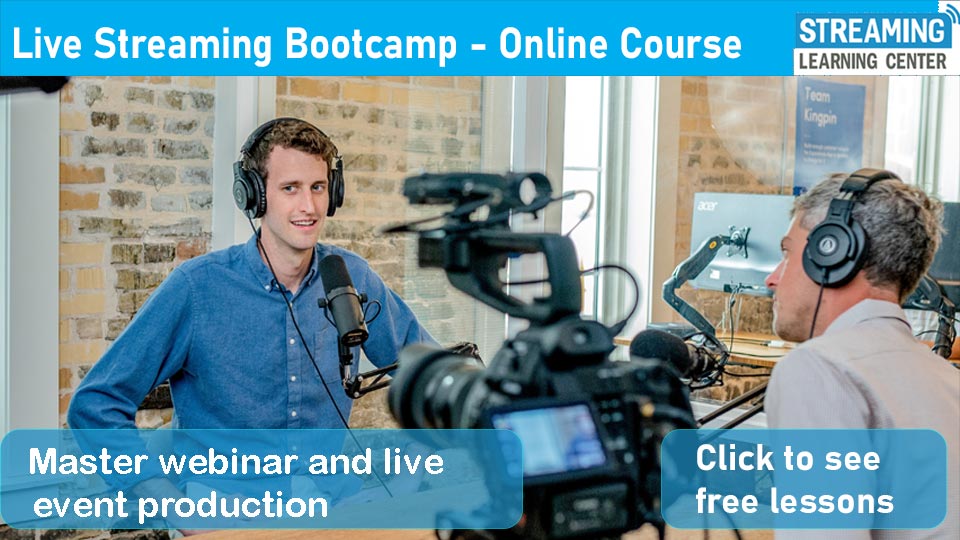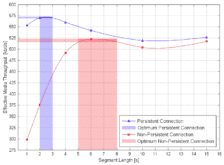HEVC Advance says it hopes to speed the adoption of HEVC decoders among the installed base of computers and devices by making some software downloads royalty free Seeking to accelerate HEVC deployment to the installed base of computers and mobile devices, HEVC Advance announced this morning that it will seek no royalty on some classes of application software with HEVC …
Read More »Video: The Case for Custom Encoding, Part 2: Resolution
Streaming Learning Center’s Jan Ozer makes the case for custom, per-title encoding on the Netflix model, focusing on resolution issues in part 1 of this 2-part series from his Streaming Media West presentation. Following the model established by Netflix in December 2015, Jan Ozer argues against content providers applying a standard encoding ladder to all of their content because of …
Read More »Video: The Case for Custom Encoding, Part 1: Bitrate
Streaming Learning Center’s Jan Ozer makes the case for custom, per-title encoding on the Netflix model, focusing on bitrate issues in part 1 of this 2-part series from his Streaming Media West presentation. Following the model established by Netflix in December 2015, Jan Ozer argues against content providers applying a standard encoding ladder to all of their content because of …
Read More »CMAF Is Halfway There, But That’s Not Far Enough: Commentary
The Common Media Application Format (CMAF) hits a predictable roadblock with encryption, where it enables two incompatible modes. This has one columnist feeling pessimistic. One of the Greek philosopher Zeno’s most famous paradoxes is the Dichotomy Paradox, also called the Infinite Halfway Theory. The concept states that if you keep getting halfway to a certain goal, you never arrive, because …
Read More »The Changing Cloud Encoding Market Leads to Cost Savings
New offerings in cloud video encoding let companies both large and small find the option that makes the most sense for them. The benefits of cloud encoding have been clear from the start: less capital expenditure (CAPEX) for encoding gear and the facilities to store it in, and fewer up-front costs for expensive licenses. For many years, however, cloud encoding …
Read More »Taxonomy of Video Quality Metrics
The sheer number of video quality measurement tools makes it difficult to choose the right metric. Here’s a quick overview of some of the options and what they offer. All compressionists should use video-quality metrics to make compression-related decisions regarding data rate, key frame interval, and other settings. Unfortunately, the sheer number of options and the noise surrounding their comparative …
Read More »Netflix Adding TLS to Protect User Privacy
The Netflix Open Connect team announced earlier this week that it would be using Transport Level Security. Here’s a look at its innovative approach to protecting viewing data at scale. In a blog post earlier this week called “Protecting Netflix Viewing Privacy at Scale,” the Netflix Open Connect team detailed the innovative approach the company used to implement HTTPS to …
Read More »Meet Charles Web Debugging Proxy-My New Favorite Tool
According to the Charles Proxy website, “Charles is an HTTP proxy / HTTP monitor / Reverse Proxy that enables a developer to view all of the HTTP and SSL / HTTPS traffic between their machine and the Internet. This includes requests, responses and the HTTP headers (which contain the cookies and caching information).” From my perspective, Charles is an affordable …
Read More »Choosing the Segment Duration for DASH or HLS
Summary This research-based article details the factors to consider when choosing the segment duration for DASH or HLS. By way of background, when choosing an HLS or DASH segment duration for VOD video, the nature of the server/player connection is critical. For persistent connections, a segment size of two-three seconds produces good quality and optimal system throughput. For non-persistent connections, …
Read More »HP Takes Z240 to 4.2 GHz; Makes Entire Workstation Line More Mac Friendly
One of the reasons I favor HP workstations is because HP practices the Japanese art of kaizen, or continuous small improvements. A great example is the recent update to HP’s entry level desktop tower, the Z240 (on the left, click to see full rez picture), which has been upgraded to accept CPUs running at up to 4.2 GHz and several …
Read More » Streaming Learning Center Where Streaming Professionals Learn to Excel
Streaming Learning Center Where Streaming Professionals Learn to Excel



